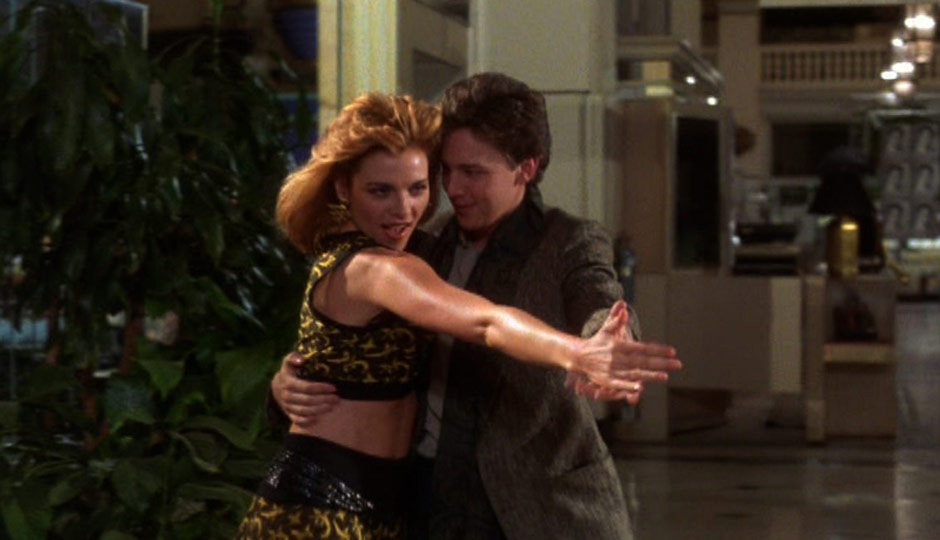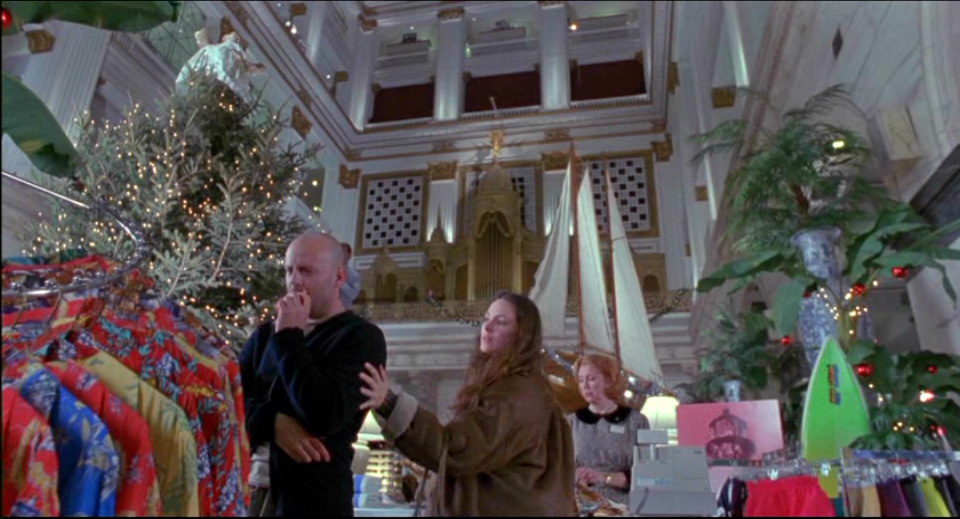From Cash Registers To Escalators To Shopping Carts: 11 Important Firsts In Bricks-And-Mortar Retail History
These days you can shop from the comfort your couch in your soft pants, ordering up a flat of cat food, paper towels, and a smartphone with one click. So it’s easy to forget that once upon a time shopping at retail stores wasn’t a necessary evil, but an “experience” that many of us actually enjoyed.
In honor of those days when “Hey, let’s go to the mall” or “Did you see that a new whatever store opened up?” were generally considered positive things to say, we thought it might be nice to take a look back at some of the important milestones in bricks-and-mortar retail history.
1. The First Business To Use A Cash Register
James J. Ritty’s pub in Dayton, OH: 1878
As legend and the National Museum of American History would have it, a pub owner by the name of James J. Ritty in Dayton, OH, was on a sea voyage in 1878 when he saw a machine used to count the revolutions of the ship’s propeller.
Ritty apparently had some cashiers who were a bit sticky-fingered at the bar, so when he got back to Ohio, he teamed up with his brother John to build and design a prototype machine that could count money, instead of propeller revolutions. They went on to patent an improved form of the cash register in 1878 and dubbed it, “Ritty’s Incorruptible Cashier,” complete with pop-up numbers to indicate sales.
The brothers ending up selling the rights to the machine in 1881, and the new owners added a cash drawer to the design. Eventually one of the Ritty brothers’ former customers, John H. Patterson, bought the business in 1884 and turned it into the National Cash Register Company — now known as the ATM powerhouse NCR Corp.
2. The First Department Store In The World
Harding, Howell & Co’s Grand Fashionable Magazine; 1796, London
There are other retail establishments that would like to claim the title of the world’s first department store, the BBC reported in 2015, but the most likely contender for the throne is this store, formerly located at 89 Pall Mall in the St. James neighborhood of London.
“Opened in 1796, this handsome Georgian shop was divided into four departments, offering furs and fans, haberdashery, jewellery and clocks, and millinery, or hats,” the BBC notes.
It was a place for women, where they could be free to peruse the merchandise without men around.
“These, for the main part, were newly affluent middle class women, their good fortune – and the department store itself – nurtured and shaped by the Industrial Revolution.”
3. The First Department Store In The U.S.
Arnold Constable & Company, 1825: New York City
Founded as a dry goods store on Pine Street in New York City by British immigrant Aaron Arnold, Arnold Constable & Company is believed to be the first department store in the U.S.
Though the store later moved locations, Arnold Constable remained a historic Manhattan retail establishment, at least until its demise in 1975.
“Arnold Constable, New York City’s oldest specialty store, will close late next month after 150 years of existence and a half‐century on Fifth Avenue,” remarked the NY Times.
In terms of the more direct predecessors of the huge department stores we think of today, much of that can be attributed to Chicago’s Marshall Field. Not only did his Field, Leiter & Company store eventually transform into the Marshall Field’s chain of department stores (now owned by Macy’s), but Field fostered the talents of a young Harry Gordon Selfridge, who later went on to found his own eponymous London department store chain, recreating ticks he learned under Field.
“At Marshall Field’s, Selfridge had come up with enduring slogans like ‘the customer is always right’ and ‘only [so many] shopping days until Christmas,’” the BBC reported.
4-6. The First Store With Electric Lights, Telephones, And An Elevator
Wanamaker’s, Philadelphia: 1878, 1879, and 1889 respectively
Wanamaker’s department store was known for pushing new technology — as well as perks for his workers — all driven by the company’s founder and namesake, John Wanamaker, writes Edd Applegate in The Rise of Advertising in the United States: A History of Innovation to 1960.
“Wanamaker purportedly was the first retailer to offer vacations, with pay, to his employees; the first to introduce electricity and the telephone into a retail business; the first to open reading and resting rooms for his customers; the first to build a hotel for his female employees; the first to provide Christmas bonuses to his sales staffs; the first to build a camp for boys who worked in his stores; the first to establish Saturdays in July and August as holidays for his employees, with pay; the first to offer medical services to his employees; the first to introduce the “satisfaction guaranteed or your money back” policy; and the first to install an elevator in a retail business.”
All of this was meant to help turn shopping into an event for everyday shoppers, PBS notes.
A new building was built on the site in 1911, and is listed on the Philadelphia Register of Historic Places. The store’s interior has been featured in a number of movies, most prominently in the 1987 romantic comedy Mannequin…

And eight years later in the Bruce Willis/Brad Pitt sci-fi flick 12 Monkeys:

The building currently houses office space.
7. The First Escalators
Harrod’s (London) and Bloomingdale’s (NYC): 1898
In the 19th century, department stores and inventors were racing to introduce new innovations to the public. That intense competition often resulted in similar innovations popping up around the same time, making it difficult to pinpoint exactly who was first.
In London, French manufacturer Piat installed its “stepless” escalator on Nov. 16, 1898, which was England’s first “moving staircase,” Urban Hub notes.
It caused quite a stir, as “customers unnerved by the experience were revived by shopmen dispensing free smelling salts and cognac,” William Lancaster writes in The Department Store: A Social History (as noted by David Long in Little Book of London Underground).
By that same year, Bloomingdale Bros. store in NYC had installed “inclined elevators” designed by Jesse Reno at its store at Third Avenue and 59th Street in New York. According to G.B. Gusrae writing in the Architectural Record in 1956, this was the first retail application of the devices in the U.S.
However, as Jan Whitaker notes in Service and Style: How the American Department Store Fashioned the Middle Class, “an advertisement for Frederick Loeser in Brooklyn in 1897 advised shoppers they could get to the second floor in just twenty-six seconds on its ‘revolving staircase.”
Other early adopters in retail included Macy’s in NYC and Lit’s in Philadelphia, but they didn’t really take off until the early 1920s, “when rider-friendly improvements were made that they become more common,” Whitaker notes.
8. First Store To Offer Shopping Carts
Humpty Dumpty, 1936
Oklahoma entrepreneur and inventor of the shopping cart Sylvan Goldman was after one thing: money. He saw shoppers in his Humpty Dumpty and Piggly Wiggly stores struggling under the weight of handbaskets filled with items, and realized that “[his] problem as an entrepreneur was no different than the problem [his] customers faced while shopping”: if he wanted to sell more food, he had to figure out an easier way for his customers to transport their groceries around the store, writes Josh Shelton in A Brief History of the Shopping Cart: An Intersection Between Great Design, Good Problem Solving, and an Infamous Urinal.
His “Eureka!” moment came while gazing at a folding chair in his office, leading to what he originally called “the folding basket carrier.” He debuted the carts at one of Humpty Dumpty store on June 4, 1936 — but soon found shoppers had to be convinced to use the new contraptions.
Goldman hired models and actors to use carts in store to build interest, The Oklahoma Network says in a video about his creation:
9. First Credit Card
Diners Club, 1950
The earliest credit card was likely the metal plate or “card” Western Union started issuing employees in 1914. However, that card was only good for purchases within company-owned stores, GotMerchant.com notes, and not used widely in retail.
The first bank card was called the “Charg-It,” and was introduced by banker John Biggins in Brooklyn, Credit Cards.com says. Whenever a customer used it for a purchase, the bill went to his bank, and the bank reimbursed the merchant and collected payment from the customer. Purchases could only be made locally, however, and cardholders had to have an account at Biggins’ bank.
In 1949, a businessman named Frank McNamara was embarrassed to discover he had forgotten his wallet while dining at a New York City restaurant. His wife paid the tab that night, but he started thinking of a multipurpose charge card to avoid such a thing from happening again. He returned in 1950 and paid his bill with a small cardboard card, Diners Club International says.
The company was officially founded on Feb. 8, 1950, and gathered 10,000 members from NYC’s “business elite” in its first year. The card is now widely regarded as the first true credit card.
10. The First Modern Mall
Southdale Center in Edina, MN: 1956
Malls have been around — in some form — for a lot longer than you may think: there was Trajan’s Market, a shopping forum that was likely built around 100-110 CE in Rome; the Gostiny Dvor in St. Petersburg, Russia, which is known as one of the first purposely-built shopping complexes, which opened in 1785 and was comprised of more than 100 shops in a large area; and the Cleveland Arcade, which opened in 1890 and was among the first indoor shopping arcades in the U.S.
But the title of first modern mall goes the Southdale Center in Edina, MN. Designed by Victor Gruen, it opened in 1956 and was the first fully enclosed, climate-controlled retail space that housed 72 department stores under one roof, as well as cafes, public art, pedestrian boulevards, a skylight, and courtyard filled with greenery and songbirds.
“Gruen liked to call it ‘introverted,’ as opposed to the ‘extroverted’ commercial strips — ‘avenues of horror,’ he called them — whose proliferation across suburban America he resented,” The Guardian reported.
The mall is still around today though it’s now surrounded by suburban streets instead of open fields, and has been a bit dwarfed by the hulking Mall of America, located only about 10 minutes away in neighboring Bloomington.
11. The First Big Box Stores
Kmart, Target, Walmart: 1962
You may have heard about 1969’s Summer of Love, but what about the Spring and Summer of Big Box stores?
Though Kmart (March 1; Garden City, MI) technically opened its first discount department store before the other two, we’ll let Target (May 1; Roseville, MN) and Walmart (July 2; Rogers, AR) share some of the glory, as they opened just months after.
“Year zero in the history of U.S. big-box stores was 1962,” according to Journalist Resource, noting that while each retailer had a different path to opening, they all shared a focus on deep discounts and suburban locations.
Above all, the most important thing for all three was access to the highway, as shoppers would be arriving by car.
Want more consumer news? Visit our parent organization, Consumer Reports, for the latest on scams, recalls, and other consumer issues.

